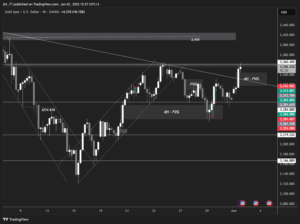The dollar declined after an increase in US unemployment claims.
The dollar declined on Friday, influenced by a drop in US Treasury bond yields, following a rise in weekly unemployment claims, which raised hopes of US interest rates reaching their peak as attention shifted to upcoming major central bank meetings.
Data released on Thursday showed an increase in the number of Americans filing new claims for unemployment benefits to the highest level in over a year and a half last week. However, layoffs were likely not accelerating as the data included a public holiday that may have caused some volatility.
Nevertheless, this was enough for the dollar to drop to its lowest level in over two weeks against a basket of currencies in the previous session as investors considered the data a sign of a slowdown in the US labor market.
The dollar index recorded 103.41 points in the latest Asian trading on Friday after losing over 0.7% in the previous session, marking its largest daily decline in weeks.
The index, which measures the performance of the US currency against a basket of six major competitor currencies, recorded a 0.6% weekly decline, heading for its worst week since mid-March.
The dollar declined to a one-week low at 138.765 against the Japanese yen, affected by the drop in US Treasury bond yields.
The British pound approached its highest level in a month at $1.2564, while the New Zealand dollar fell 0.11% to $0.6089.
The Turkish lira dropped over 1% to a new record low at 23.54 against the dollar after Turkish President “Hafiza Gaye Erkan” appointed an executive official in the financial sector in the United States as the head of the Turkish central bank.
The euro remained stable in the latest trading at $1.0776, hovering around its highest level in two weeks recorded on Thursday at $1.0787. The European single currency recorded a 0.6% weekly increase, on track to break a four-week losing streak.
The Canadian dollar traded at 1.3371 against the dollar in the latest trading, not far from its highest level in a month recorded on Wednesday. The Australian dollar remained near its highest monthly level at $0.6711.
Gold prices are set to achieve weekly gains.
Gold prices declined on Friday, June 9, after rising over 1% in the previous session, but hopes of the US Federal Reserve refraining from raising interest rates have led the yellow metal to aim for weekly gains.
At 03:04 GMT, gold in spot trading decreased by 0.2% to $1,964.79 per ounce, but it is heading for a weekly increase of 0.9%.
US gold futures remained steady at $1,979.80.
Attention is now turning to the May US consumer price inflation report, scheduled to be released on June 13, ahead of the Federal Reserve meeting. This report will provide investors with greater clarity on the strength of the world’s largest economy.
The International Monetary Fund (IMF) urged the US Federal Reserve and other global central banks yesterday, Thursday, to “stick to the path” regarding monetary policy and remain vigilant in combating inflation.
Raising interest rates increases the opportunity cost of holding gold, which does not yield returns.
As for other precious metals, silver rose by 0.4% in spot trading to $24.3387, and palladium increased by 0.3% to $1,365.39.
Oil prices decline amid demand concerns.
The prices of oil declined in early Asian trading on Friday, June 9, as concerns about demand overshadowed the possibility of supply contraction from global producers, while investors remained skeptical about the prospects of a nuclear agreement between the United States and Iran.
By 00:58 GMT, Brent crude futures fell by 36 cents or 0.5% to $75.60 per barrel, while US crude dropped by 33 cents or 0.5% to $70.96 per barrel.
The benchmark crudes were down about a dollar on Thursday, partially recovering from earlier losses of over three dollars, after both Washington and Tehran denied the validity of a report by the Middle East Eye website claiming they were nearing a nuclear agreement.
For the week as a whole, the two crudes are on track to suffer losses of about 1%, marking a second consecutive weekly decline.
Oil prices had risen earlier in the week following Saudi Arabia’s commitment to significant production cuts, but the gains were diminished by increased US fuel inventories and weak Chinese export data.
The United States and Iran both denied the report on Thursday claiming they were close to reaching a temporary agreement that would restrict Iran’s nuclear program in exchange for easing sanctions, including allowing Iran to export up to one million barrels of oil per day.
Some analysts suggest that oil prices may rise if the US Federal Reserve does not raise interest rates at its upcoming meeting on June 13 and 14.
Disclaimer: This article is not investment advice or an investment recommendation and should not be considered as such. The information above is not an invitation to trade and it does not guarantee or predict future performance. The investor is solely responsible for the risk of their decisions. The analysis and commentary presented do not include any consideration of your personal investment objectives, financial circumstances, or needs.





